With a height of nearly 4 feet, it’s understandable why some may assume that this bizarre bird is only a prop.
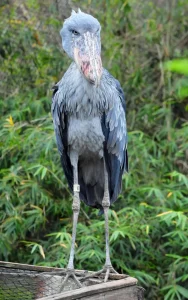
His yellow-green eyes and a massive shoe-shaped bill almost give him a cartoonish expression — and as he looks around, his head moves in quick bursts like a robot.
But deep in the tropical swamps of East Africa, you’ll find these shoe-billed storks in their marshy homes, perched at the water’s edge for hours waiting for the right time to snap down on their favorite fish.
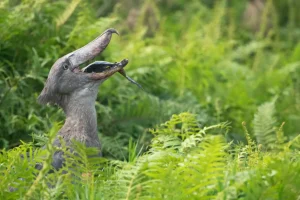
They’re eerily prehistoric — and despite their amiable expression, are even known to hunt young crocodiles and giant monitor lizards as a snack. They remain motionless for long periods each day, simply just being patient for prey to come along.
For the most part, shoebills are silent, only making noise when they clap their bills together rapidly to greet another bird or call out to their young.
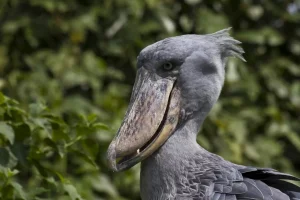
Besides his gigantic bill, there’s a reason why shoebills are nicknamed “king of the marshes.” Their wings can stretch over 8 feet wide — and they can fly short distances despite being so large.
With their striking features and unwavering patience for food, it’s hard not to be impressed by these giants. They were a beloved species to the ancient Egyptians, even showing up in their artwork.
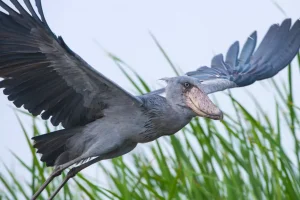
But over recent decades, these magnificent creatures have been in a decline due to habitat destruction from oil exploration and the expansion of farms.
They are also at risk of being captured in the wild for the illegal bird trade — and to be put on display in zoos.
“They are valuable birds, and the almost complete absence of breeding success in captivity maintains a constant pressure on the wild population for meeting trade demands,” researchers said in a recent conservation plan.
“Shoebills are highly sensitive birds, and past exports have involved high mortality during capture, transit and captivity … Only two zoos have been known to produce chicks —two in 2008 and one in 2009. This means that captive populations are not self-sustained, and need to be replenished with wild birds if they are to be maintained.”
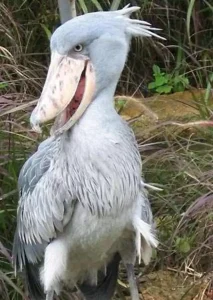
Fortunately, locals in Mambamba Lake, East Africa, who live close to shoebill habitats have recognized the birds are targets of the trade and have set up volunteer organizations to watch out for any poachers and engage with local law enforcement to report them.
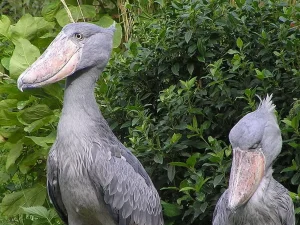
They also bring visitors through the dense marshlands — and if they’re lucky, they’ll get a once-in-a-lifetime glimpse of these iconic birds in the wild.
0 Comments